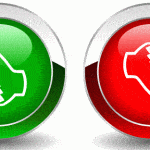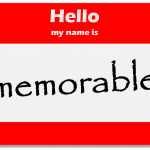Email marketing is like a power tool – it’s got incredible capabilities, but you can cause real damage if you don’t know how to use it.
Below, we’ll explain what email marketing is and give you the keys to make it work for your wellness business.
1. Email newsletters vs email marketing: not the same.
Email marketing is simply another form of direct marketing, like postcards and other direct mail. When you send marketing emails, you’re hoping that readers will take a specific action that will result in the successful sale of a given product or service.
Email marketing is really about you – your products and services. Marketing emails are often unread (unless you have an excellent relationship with your readers) and quickly deleted.
On the other hand, email newsletters offer information that matters to the subscriber. They’re often educational or generally informative. It’s not unusual for readers to save or print your newsletter. They may even forward it to friends or coworkers.
Unlike traditional direct mail, both email newsletters and email marketing are permission-based techniques. That means you need permission from the recipients to use their email addresses for this purpose.
Once you’ve got permission, don’t shoot yourself in the foot by stuffing your newsletters full of sales pitches. It’s OK to do some “soft selling” in your newsletter, but it should be secondary to the main content of the newsletter – absolutely not front and center.
2. First, get their attention…
Folks scan their email inboxes very quickly. In mere seconds, they decide whether to look at it now, delete it, or save it for later (which is almost as bad as deleting it).
They decide whether to look at your email based on whether:
- it’s from a recognized and reliable sender
- it sounds interesting enough to deserve a closer look
That means that you need to think very carefully about what will appear in the “From” area and what goes in the subject line.
A suitable sender in the “From” field:
Good: “Maia Morris, President”
Good: “HealthyLife Wellness”
Bad: “[email protected]” or “mm”
Bad: “sales”
Bad: “Maia” or “Maia M.” or “maiamorris” or “maia morris”
A catchy subject line:
Good: “Complimentary customized workout log”
Good: “Boost your immune system before cold weather”
Bad: “HealthyLife Labor Day Update”
Bad: “Special Letter For Zoom Ellipticals”
Bad: “ClubHelp Software: Bulletin”
Bad: “An AudioMessage From Joe”
3. The heart of your email: the call to action
A “call to action” (CTA) is the action you want a potential buyer to take. Successful TAs describe exactly what you want readers to do, and gives them reasons to do it now.
A CTA typically has three components, whether it’s in a postcard or email:
- reasons a prospect should buy from you now – the most important features, benefits and advantages of your product or service
- risk-reduction elements – elements that increase the confidence buyers have in your product and business practices, like guarantees or warranties?
- price, order and payment information – for example, you might include links to an online ordering form or a list of the credit cards your business accepts
In email marketing:
- The call to action is expressed in words, images and links to make it as easy as possible for your readers to take that next step.
- You’ll often split the elements of the CTA between your email content and information on your website. For example, you might say “YogaFun enrollment starts at $49” and provide more pricing details on your website.
4. What mistakes should we watch for?
- Reusing the same offer over and overWe’ve seen vendors send identical emails – same subject line, same content – all year long prompting readers to listen to an “special audio postcard.”After the first couple of identical emails, do you think many folks bothered to look at it? Nope. It’s generally a better idea to switch up your marketing messages. For example, one promotion might be fitness for working parents, and another might be eating well in a hurry.
- Sending email to people who didn’t ask for it You’re almost certainly violating the federal CAN-SPAM act. And worse, your readers will click the “Report as spam” button and blacklist you with their Internet service providers. That means your emails won’t be delivered to many recipients. Plus, why would you want people to associate your product or service with unwanted email? That’s not a happy thing!Don’t automatically add customers to your email list just because they bought from you once. Ask them explicitly if it’s OK to send them occasional marketing-related emails.
- Too much info We saw a promotional email recently from a software vendor that consisted of a 300+word letter from the president haphazardly describing a multitude of stuff – everything from big picture-ideas to very detailed feature descriptions AND the corporate mission statement! Much too much info, and it didn’t zero in on what mattered to its audience.
- Not enough infoIn the audiocard example mentioned above, the email failed to include any reasons to buy. It literally said only “I have a special audio postcard for you regarding ProductABC.” Few readers would be motivated to invest the effort to listen based on so little info.
- No relationship-building with current or potential customers Many vendors reach out to their customers only when they want to sell them something. Look for opportunities to communicate with current and potential customers that AREN’T exclusively focused on sales. You’ve got lots of options – newsletters, invitations to hear a special speaker, and more. The key is to do things that mesh well with your business and illustrate your genuine concern for making your customers’ lives better.
- Sending would-be buyers to your home page When you’re trying to sell something specific, don’t send people to your home page. Set up a separate landing page within your website for that specific product. That’s where you want to send people for more product details.If buyers choose your service for differing reasons, consider creating a separate landing page for each group of buyers. For example, if you sell wellness services to consumers AND employers, it usually makes sense to use one landing page for consumers and a different landing page for employers.
- Multiple calls to actionRadial worked with a vendor recently to streamline a disappointing email campaign. One issue: this client typically included at least three competing calls to action in every marketing email – for example, a link to a sample website, a link to online demos, and yet another link to a free trial.Far better to pick just one action you want readers to take, and focus all your efforts on that one action.



